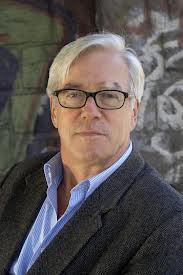When Greenpeace emerged as an international organization in the 1970s, it embodied a spirit of courageous protest by activists who were willing to place their bodies on the line to call attention to environmental injustice. Its mission was to "bear witness" to environmental abuses and take direct nonviolent action to prevent them.
 However Greenpeace membership began to decline after the boom years of 1989-1992. The number of paying supporters world-wide fell from 4.8 million in 1990 to 3.1 million in 1995, but the loss was particularly pronounced in the US, Canada, Sweden, New Zealand, Denmark, the Netherlands and Australia.
However Greenpeace membership began to decline after the boom years of 1989-1992. The number of paying supporters world-wide fell from 4.8 million in 1990 to 3.1 million in 1995, but the loss was particularly pronounced in the US, Canada, Sweden, New Zealand, Denmark, the Netherlands and Australia.
In the US, Greenpeace decided to test whether the public was still responding to its confrontational approach by sending out a direct mail campaign entitled "Confrontation Works". The pilot run received such a poor response that it was never expanded and even though this was not a poll of Greenpeace members, and even though focus groups had shown that, in general, direct mail donors – as opposed to other donors – tended to be put off by confrontation, it was interpreted as a poll of potential members:
What it said to Greenpeace was that of the several million people out there who might become supporting members of the organization, very few were impressed with direct confrontation as a tactic – even when it worked in the struggle against environmental adversaries. Significantly, Greenpeace subsequently became a much more low-key organization....
In 1993, when Greenpeace leaders in the UK wanted to join the community campaign against a waste incinerator in East Liverpool, it was advised by its direct mail consultants that this would not appeal to direct mail donors, so it didn't go ahead.
Like many large environmental organizations that depend on subscriptions and donations, Greenpeace became sensitive to media portrayals of it as being “too radical”, “too confrontational” and “too negative”. So in the early 1990s Greenpeace Australia reinvented itself as an organization that offered solutions and worked with industry and government to get those solutions in place, in the mistaken belief that this would bring in more subscriptions. In fact, membership declined from 103,000 in 1992 to 60,000 in 1997.
A new current of thought emerged, both at the international level and at the level of national affiliates such as Greenpeace Australia. Greenpeace leaders and many members began to talk of going beyond negative criticism. The Greenpeace Australia website proudly asserted this new philosophy: "We work with industry and government to find solutions."
Even before this emphasis on solutions, in 1989, Greenpeace Australia was being restructured:
The new executive director of Greenpeace Australia ... said he'd been sent out from the United States as a trouble-shooter to clean out the hippy image of the local outfit and bring it into line with the rest of the Greenpeace world. He immediately fired a quarter of the existing campaigning staff and replaced them with people better suited to the new conservative and bureaucratic requirements...
The new boss was recently quoted offering gratuitous flattery of the Australian Prime Minister, normally more noted for his support for uranium mining, Australia's nuclear alliance and the pocketbooks of large corporations. "Never before have I seen a leader who is so green. Hawke is doing for the environment movement what Gorbachev did for east-west relations. He is ahead of us all."
 In 1992, Paul Gilding (pictured) took with him the idea that Greenpeace needed to focus on “solutions” when he was promoted from head of Greenpeace Australia to head of Greenpeace International. There he argued for closer cooperation with corporations. “If we had just kept on saying there was a problem, then people would have switched off”, he told the Sydney Morning Herald.
In 1992, Paul Gilding (pictured) took with him the idea that Greenpeace needed to focus on “solutions” when he was promoted from head of Greenpeace Australia to head of Greenpeace International. There he argued for closer cooperation with corporations. “If we had just kept on saying there was a problem, then people would have switched off”, he told the Sydney Morning Herald.
When Lynette Thorstensen replaced Gilding as executive director of Greenpeace Australia, she continued his emphasis on 'solution strategies'. “Greenpeace is now convinced the best path to progress is via the country’s boardrooms,” reported Good Weekend magazine in an interview with Thorstensen in 1993.
The state Minister for the Olympics, Bruce Baird, wasn’t complaining: “They’ve shown a much more constructive approach lately”, he told Good Weekend. “It is a new style of environmentalism I find much more persuasive. Before they were seen as ultra-green and opposing everything.”
Indicative of this shift is the replacement of the previous chair of Greenpeace Australia, former nuclear activist, author and academic Jim Falk, with Bob Wilson, a former government bureaucrat. Wilson presided over the Sydney Water Board in the late 1980s and early 1990s when the Board was using large doses of public relations and outright secrecy to cover up the gross contamination of the ocean that its sewage discharges were creating, because they contained so much toxic waste. The chair of the Greenpeace board selects the head of Greenpeace, who in turn appoints Greenpeace campaigners.
The shift from confronting business to cooperating with business was evident when Greenpeace International launched Greenpeace Business, an expensive newsletter aimed at the corporate world. The 1996 issue congratulated Unilever and Sainsbury's claiming: "If any progress is to be made in saving the North Sea ecosystem, it will be the result of an alliance of corporate self interest with the vision and determination of environmental organisations."
In 1998, when Nike was much in need of good PR following media coverage of working conditions in factories producing Nike shoes in third-world countries, Greenpeace congratulated Nike for promising to eliminate the use of PVC in its products, making “PVC free sportswear available to athletes and consumers”. The Greenpeace report contained a picture of Greenpeace presenting a cake in the shape of a green Nike shoe (complete with trademark swoosh) to Nike, and the text read: “Greenpeace is calling on other sportswear manufacturers to follow suit and ‘just do it!’” In fact, the only part of most Nike shoes that is made from PVC is the “swoosh,” according to a Nike representative in Australia.
In the lead up to the 2000 Sydney Olumpics Greenpeace International wrote to Olympic sponsors—including BHP, Coca Cola, General Motors-Holden, McDonalds, and others—offering to help them earn the name of “green” in the same way that the Sydney Olympics had:
As sponsors, you have the opportunity to play a key role in this success. One of the many benefits of being part of the Green Games is the chance to demonstrate your company’s commitment to the environment and to future generations. The Sydney Olympics offer your staff the opportunity to take part in a long-term global initiative to protect the world’s environment… Greenpeace would like to work with you to explore the areas in which you can make an environmental contribution during the Sydney 2000 Games.
So, for example, Greenpeace offered to help BHP demonstrate its commitment to the environment by conserving energy or using environmentally safe refrigerants although BHP was named one of the worst ten corporations in 1995 by Multinational Monitor for polluting the Ok Tedi River in Papua New Guinea with a “daily dose of more than 80,000 tons of toxic mining waste” and for “helping to draft legislation for the PNG parliament that would make it a criminal offence to sue BHP”.
 Gilding’s business-friendly approach was unpopular with “old guard” environmentalists in the organization, and in 1994 he was ousted from his position as head of Greenpeace International. However, the fight over the Greenpeace approach continued, various board members left, and a new CEO was appointed a year-and-a-half later who represented a win for the solutions/business partnership approach. He was Thilo Bode (pictured), an economist from industry with World Bank experience who had no environmental credentials before being appointed head of Greenpeace Germany in 1989.
Gilding’s business-friendly approach was unpopular with “old guard” environmentalists in the organization, and in 1994 he was ousted from his position as head of Greenpeace International. However, the fight over the Greenpeace approach continued, various board members left, and a new CEO was appointed a year-and-a-half later who represented a win for the solutions/business partnership approach. He was Thilo Bode (pictured), an economist from industry with World Bank experience who had no environmental credentials before being appointed head of Greenpeace Germany in 1989.
Bode was hired for his management skills, which he demonstrated by making Greenpeace Germany the richest of all Greenpeace operations. He stated shortly after his appointment that there was a need for cultural change in Greenpeace.
Bode, like Gilding, believed in liaising with industry and allowing the Greenpeace name to be used to endorse “green” products such as CFC-free fridges by Westinghouse. This is despite the fact that Westinghouse was used in The Greenpeace Book of Greenwash as a prime example of a company that benefited from corporate greenwashing. The case study outlining the environmental legacy of Westinghouse’s nuclear operations began: “In the US, when people hear the name ‘Westinghouse’ they think of household appliances. Only rarely does the company publicize another side of its business: nuclear weapons and reactors”. No doubt their Greenpeace endorsed CFC-free fridge will perpetuate that perception.
Bode was keen to promote a more “solutions-oriented” approach in Greenpeace. One of his initiatives has been to work with car companies to produce a more fuel-efficient car. Greenpeace Germany has invested DM2.5 million to cut fuel consumption by about half in a Renault car.
This investment, and the ensuing promotion of the car, has caused some disquiet within Greenpeace amongst those who are uncomfortable with the fact that, rather than promoting public transport, the organization was promoting an energy-intensive form of transport which pollutes the atmosphere. One campaigner told Polly Ghazi, who was writing for the New Statesman, “We should not be getting into the business of selling cars of any kind”.
Even Greenpeace USA is adopting “solutions-oriented” campaigns which involve “giving positive support for new technologies, products, and companies where appropriate”. Tim Andrews told Time magazine in 1996: “It’s an effort to sit down with businesses instead of coming out of the woodwork yelling. We use that as a last resort, yes. But we’re trying a more diplomatic approach.”
In London, Greenpeace UK hosted a conference in 1996 to identify solutions that could be achieved through alliances between environmentalists and industry. In attendance at the £375-per-head conference were delegates from corporations such as ICI (UK-based multinational chemical company), British Nuclear Fuels (BNFL), BP, Shell, British Agrochemicals and Nestlé. Lord Peter Melchett, director of Greenpeace UK, argues that “solutions enforcement” is a new form of direct action.
Polly Ghazi, writing in the New Statesman, claimed that Greenpeace had strayed from its defence of nature to forge “closer ties with its former business enemies”, and suggested that its support of oil company BP for its solar-power initiatives gave BP huge “public relations capital” for a mere investment of 0.1 per cent of the BP group’s turnover.
The campaign programme director of Greenpeace UK wrote in a reply to the New Statesman that Greenpeace opposed “the plan of the other 99.9 per cent part of that company to expand its oil operations into the Atlantic”. He also wrote: “In the course of our campaigns governments often turn from being opponents to allies. That does not mean Greenpeace is becoming an adjunct or supporter.”
Greenpeace still carries on its historic mission of “bearing witness,” but its focus on “solutions” has required Greenpeace to sometimes turn a blind eye to the environmental sins of the companies with which it works. The problem is not that everyone in Greenpeace has sold out, but that the new emphasis on solutions is leading to compromises that the former Greenpeace would not have considered.
Corporations and their business magazines are encouraging this nascent tendency, which they see as evidence of growing “maturity” on the part of Greenpeace. “We’ve reached a detente with Greenpeace,” a spokesman for the multinational chemical firm Hoechst told Time magazine. A spokesman for Bayer, another multinational chemical company, said that “we can conduct substantive discussions with their people”.
Some environmentalists, however, fear that this new path is a slippery slope. Will Greenpeace continue to uphold the principles of its founders, or will it become just another symbolic marketing hook, a subscription sold to suburban householders to be taken in regular doses as a palliative for environmental anxiety while they continue their lifestyles as polluting producers and consumers?
Greenpeace is being co-opted to support industry solutions, and the opportunists within the organization have made the most of the situation. Radicals within Greenpeace have been marginalized; presumably, many have left, either disillusioned or forced out in the waves of downsizing that occurred during the 1990s as Greenpeace was restructured into an ‘efficient’ corporate machine.
In the downsizing of Greenpeace, the negotiations-oriented people have come to dominate, and those unwilling to compromise have left. Those remaining seem to believe that what they are doing is right or have convinced themselves that it is. They don’t recognize it as greenwashing. Whereas once there was bitter division about the new direction of Greenpeace and its solutions focus, it no longer seems to be an issue amongst current employees. It is just accepted as the right way to go.
To date, Greenpeace policy does not allow the organization to take money from industry or government, so it is not the commercial opportunities which are converting Greenpeace into a greenwashing operation. It appears to be the career opportunities available to individuals, rather than the funds available to the organization, that are influencing Greenpeace decisions. Like many groups, Greenpeace is at a crossroads. Will it remain a principled “green warrior” or will it become a deal-making, compromised collaborator with the powers that be?